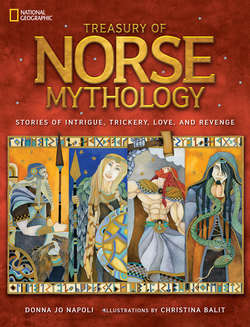Читать книгу Treasury of Norse Mythology: Stories of Intrigue, Trickery, Love, and Revenge - Christina Balit - Страница 8
NOTE ON NORSE NAMES
ОглавлениеOld Norse used letters that don’t appear in the modern alphabet for English, such as Þ, which indicates the first sound in think; ð, which indicates the first sound in the; and æ, which indicates the first sound in act. They also added marks above or below vowels to indicate a variety of sounds. While these Old Norse alphabetic symbols are beautiful, I feared that using them here would inhibit you from reading passages aloud. I wouldn’t risk robbing you of that joy. So, I have anglicized all proper names here. Further, Norse names often end in r because a final r can be a nominative case marker, showing that the word is the subject of its sentence. Since English does not use case markings on names, for the sake of consistency, I’ve chosen to leave out nominative case-marking final r’s. Thus, “Óðinn, the Alfaðir of the Æsir,” is known here as “Odin, the Allfather of the Aesir.” “Þorr, who swings his hammer, Mjölnir,” is here “Thor, who swings his hammer, Mjolnir.” And so on.
If you would like to know more about Old Norse, please consult a site for the International Phonetic Alphabet (IPA), such as www.phonetics.ucla.edu/course/chapter1/chapter1.html or en.wikipedia.org/wiki/International_Phonetic_Alphabet. Then use the IPA to help you understand a site on Old Norse, such as www.omniglot.com/writing/oldnorse.htm. Please watch the wonderful video there.
